The Tomahawk missile began life as a strategic weapon, intended to bring nuclear firepower to the Navy's surface ships and submarines. The Navy quickly adapted it as a long-range anti-ship weapon, although the bulk of Tomahawk's impact was made by the second generation of Tomahawks, the Tomahawk Land Attack Missile (TLAM)-C and TLAM-D, equipped with a 1,000 lb conventional warhead and a submunition dispenser respectively. Tomahawk's combat debut against Iraq in 1991 was a triumph, and soon the weapon became a favored instrument of US politicians, thanks to its accuracy and lack of a pilot at risk of being shot down.
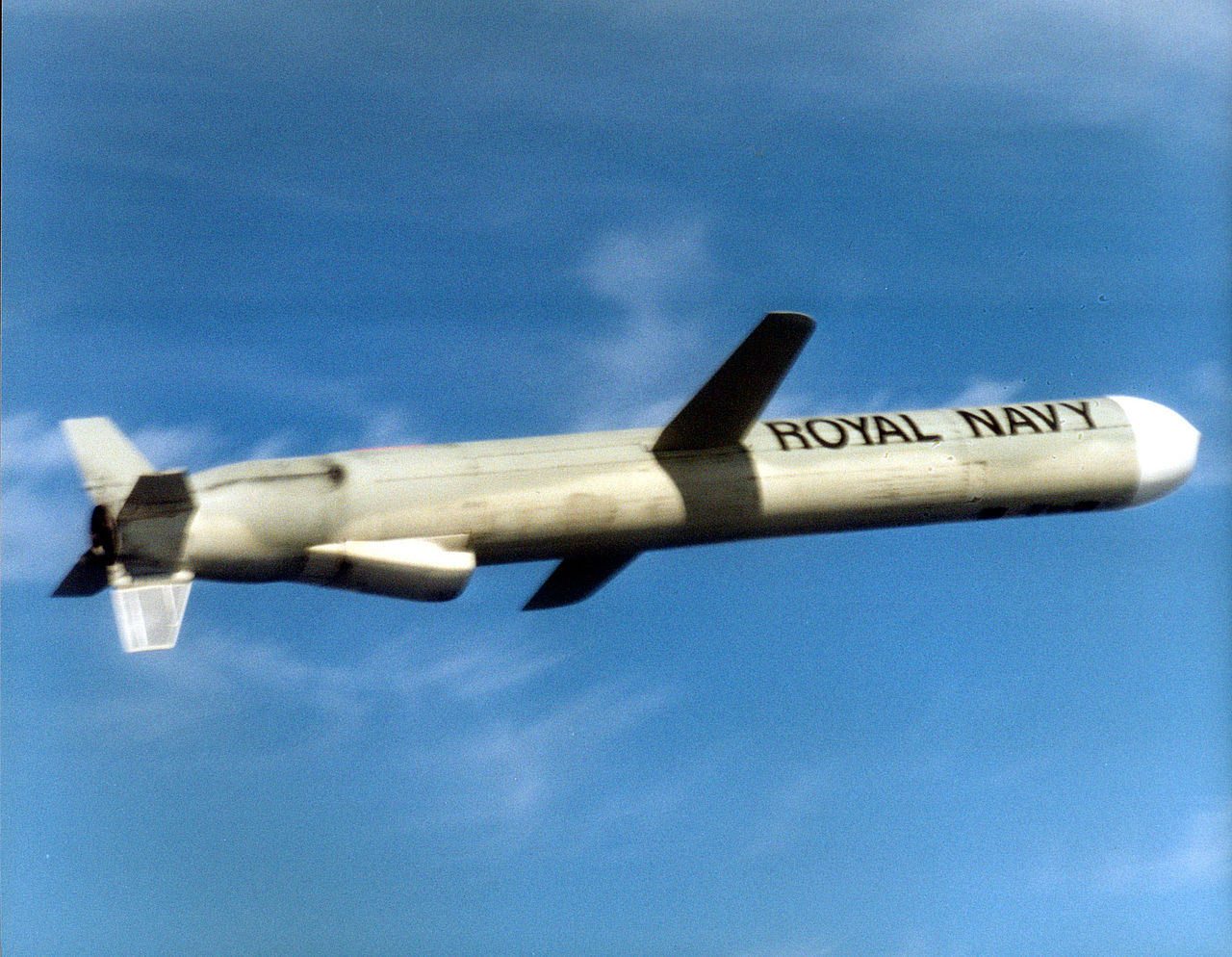
An RN Tomahawk in flight
Even as the dust settled from the first Tomahawk strikes in Iraq, a new version, known as Block III, was being tested. The single most important difference from the Block IIs used in Desert Storm was the addition of a high-precision GPS receiver. This removed the various constraints of TERCOM and DSMAC, allowing the missile to be used on targets that hadn't been mapped to within an inch of their lives, and giving targeters more flexibility with routes.1 TERCOM and DSMAC remained an option, though, and improvements were made to the later system. Also improved was the warhead on the TLAM-C, with advancing explosives technology allowing it to shrink to 700 lbs, giving space for more fuel and increasing range to around 870 nm (1000 regular miles). Rounding out the package is an improved engine with about 20% more thrust. Besides newly-built Block IIIs, many Block IIs and TASMs were converted to the configuration. Block III also saw the Royal Navy join the Tomahawk program, buying a number of UGM-109s for its submarine force.
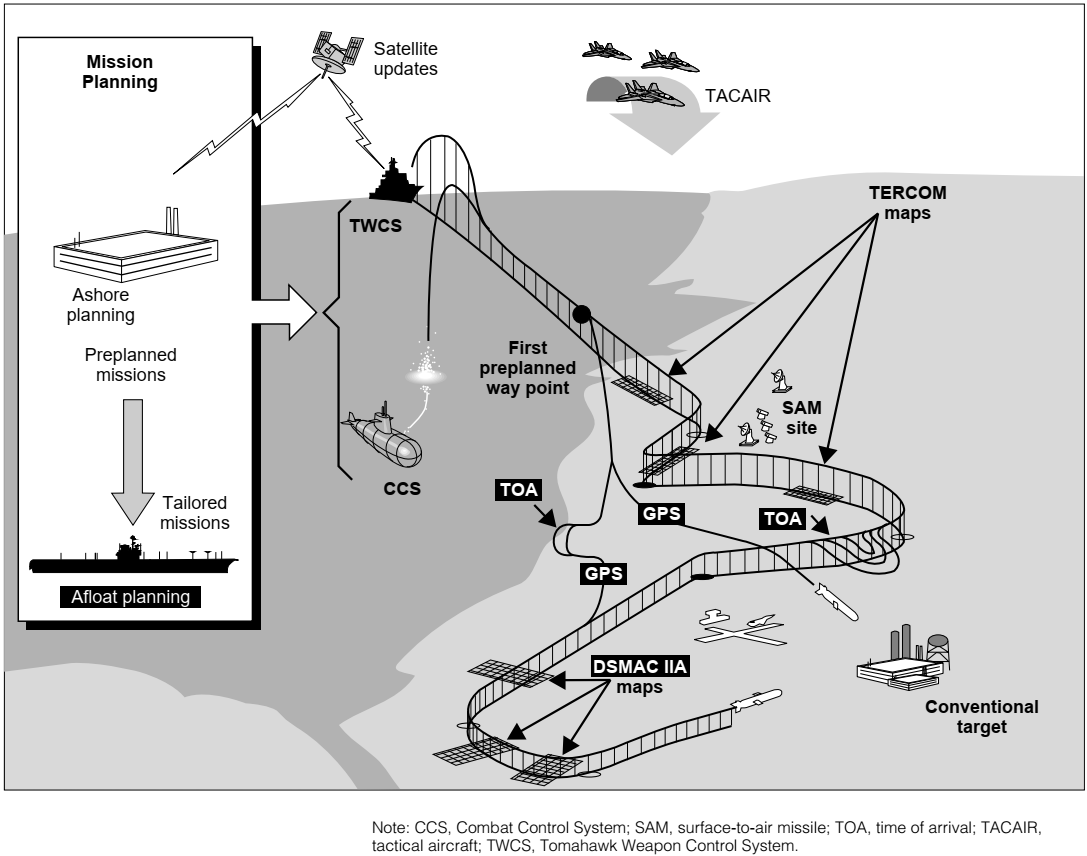
Improvements to the Tomahawk targeting system ran in parallel with the improvements to the weapon itself.2 By the late 80s, improved computers had shrunk the targeting systems to the point where they could be carried on a ship, usually the carrier that served as the flagship for the Tomahawk platforms. This also enhanced coordination with the manned aircraft that were integrated into the group's strike plan. The plans were distributed by helicopter to the firing ships themselves. In the late 90s, the systems had gotten even better, and were being installed on all Tomahawk platforms, complete with software to automatically generate Tomahawk routes for manual approval, instead of the painstaking manual process previously required. Tomahawks could now be fired in near real-time at unexpected targets, a valuable capability in the unsettled world left by the end of the Cold War.
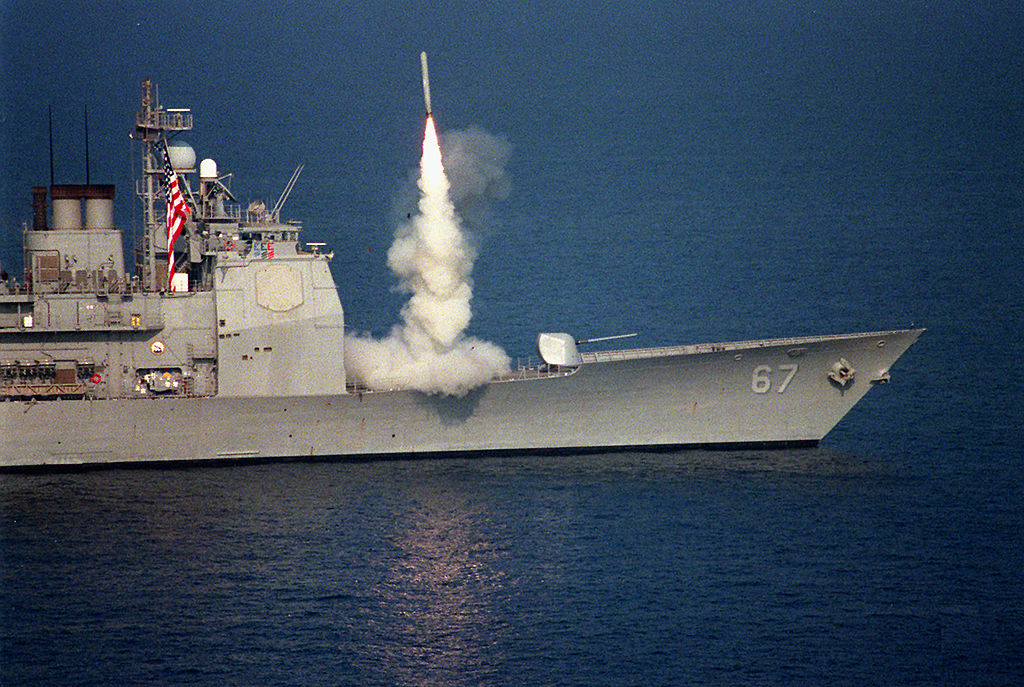
Shiloh launches Tomahawks against Iraq in 1996
The ability of the Block III to hit targets based on GPS data alone allowed it to be used in the conflicts that popped up throughout the 90s. Block III's first combat use was in 1995, during the NATO bombing campaign against the Bosnian Serbs. In both that campaign and the 1999 operations against Yugoslavia, Tomahawks were used to take out key targets in enemy air defense networks, opening the way for manned aircraft to follow. Iraq was another perennial trouble spot, with strikes in 1996, in retaliation for Saddam's campaigns against the Kurds, and in 1998 as part of Operation Desert Fox, to force him to comply with the UN weapon inspectors. Outside of the Balkans and Iraq, Tomahawks were used in 1998 to attack al-Qaeda training camps in Afghanistan, and a chemical factory in Sudan suspected of producing VX nerve gas.
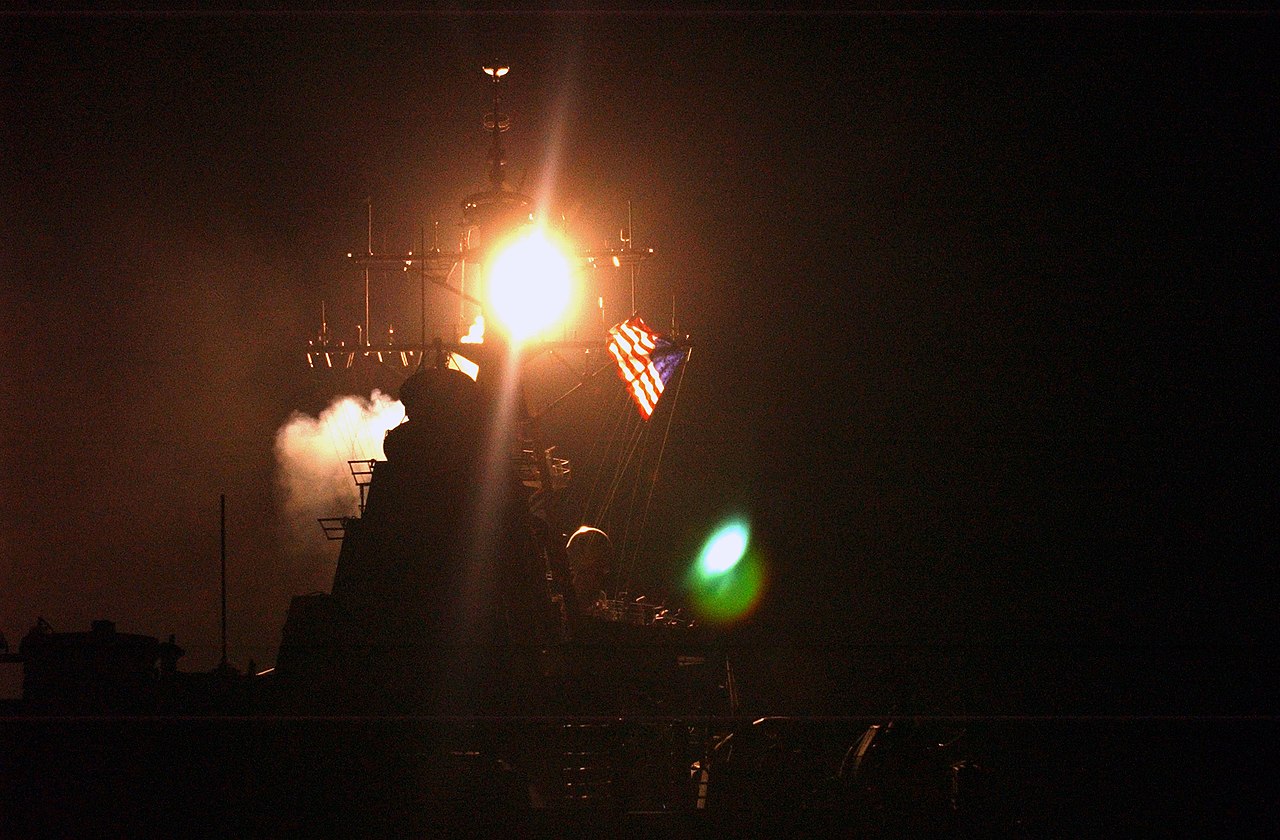
Donald Cook launches a Tomahwk in 2003
Afghanistan and al-Qaeda would again become targets in 2001, when Tomahawks were used in the opening stages of Operation Enduring Freedom. The lack of an air defense system and the heavy air campaign saw fewer missiles used throughout OEF than had been fired in 1998, but things were very different two years later, when the US went to war against Iraq again. The first 10 days of the invasion saw over 700 TLAMs fired at targets in central and northern Iraq, with the usual high success rate. Another 100 came over the rest of the operation, for a total of about half the operational launches of Tomahawk to that point.
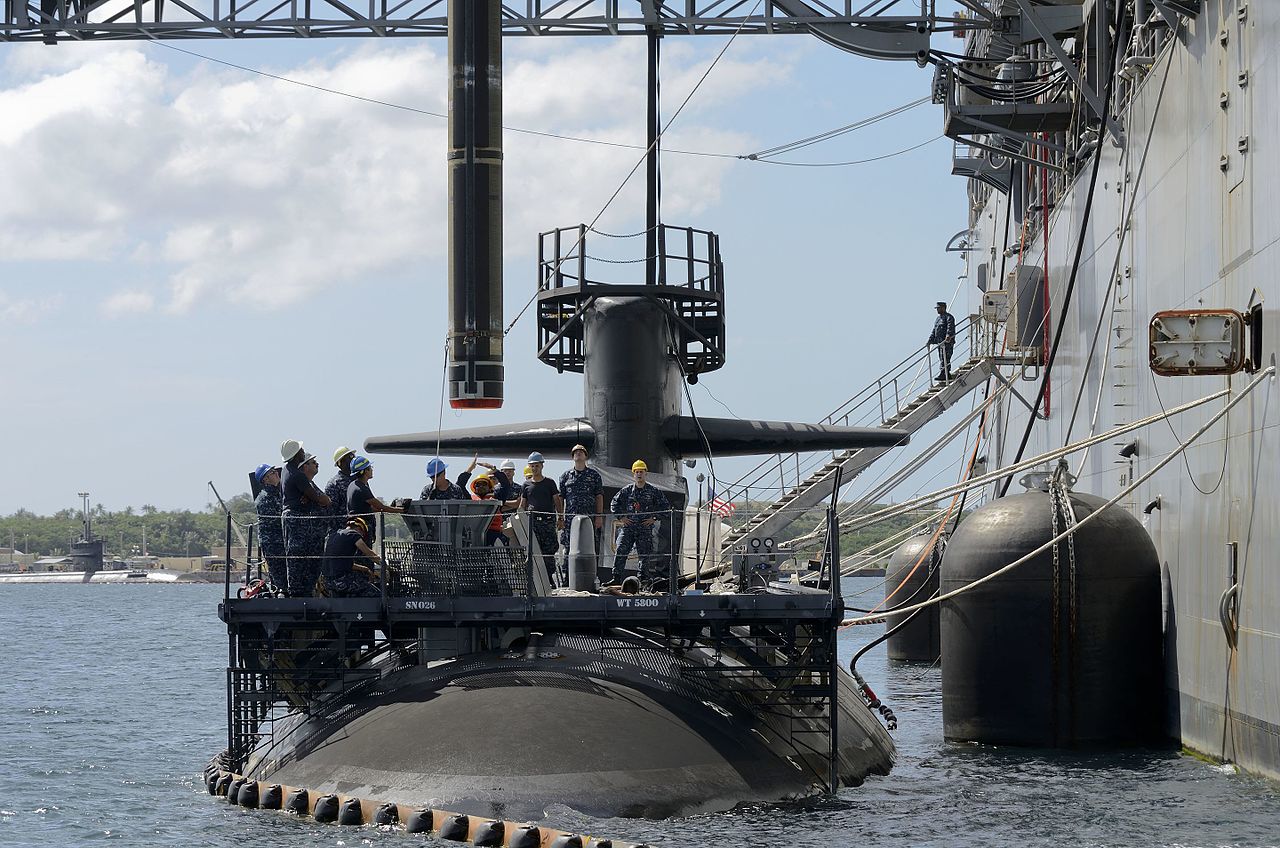
A Tomahawk is loaded into the VLS aboard USS Oklahoma City
Even as missiles once again filled the skies of Iraq, the next generation of Tomahawk was taking shape. The RGM/UGM-109E Block IV Tactical Tomahawk or TacTom was a substantial redesign, with extended wings and a new nose. The biggest change, however, was the addition of a satellite datalink, which allowed the missile to be retargeted in flight, and to pass information back to the operators, presumably images captured by the DSMAC camera. This raised the possibility of using the missile as a reconnaissance asset, to find targets that it could then attack, or even directing it against moving targets. TacTom is also intended to be cheaper to build, and has extra fuel that gives it an estimated range of around 1,350 nm. The warhead is the same as the TLAM-C, the cluster warhead having been discarded due to concerns about unexploded ordnance.
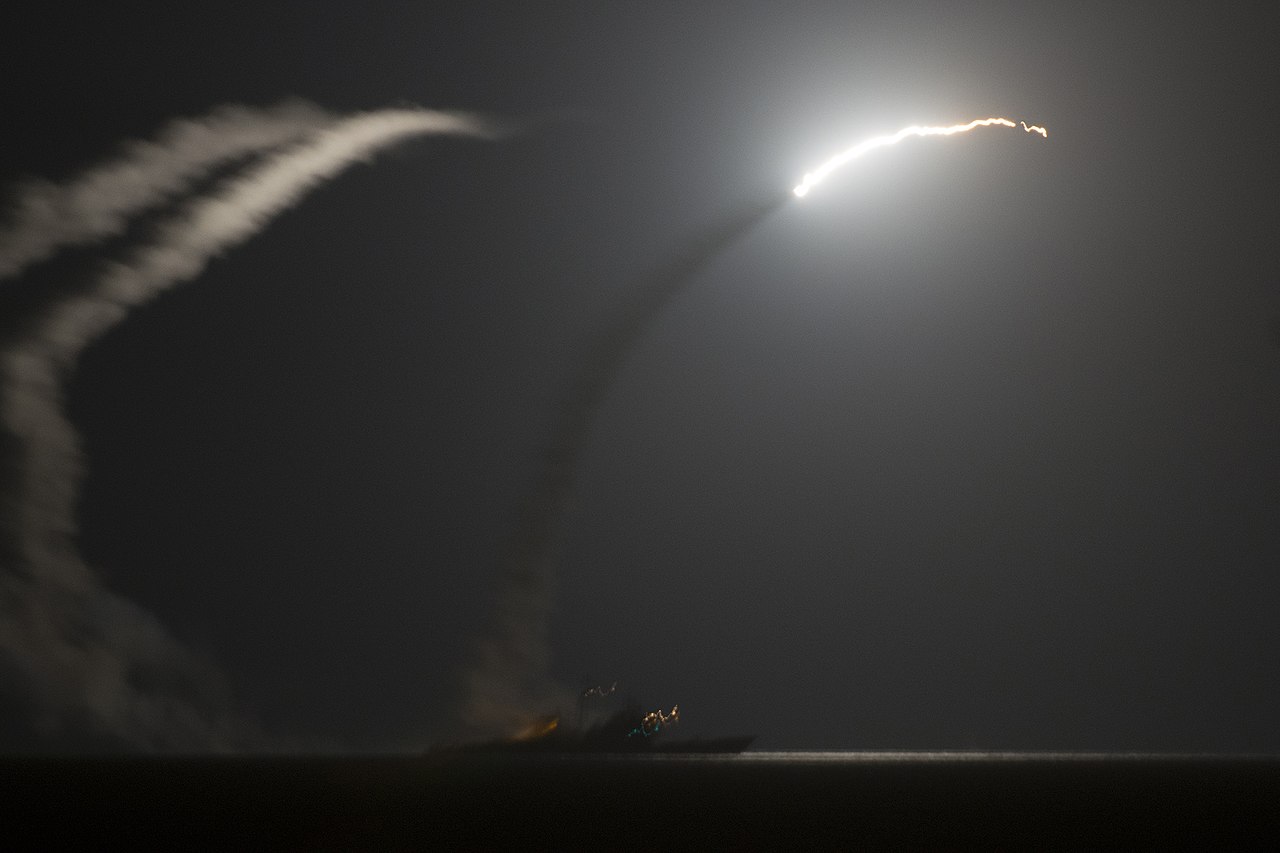
Philippine Sea fires Tomahawks against ISIS
Since the end of the Iraq War, Tomahawk has seen frequent use, although not nearly on the same scale. Only four Tomahawks were fired between 2003 and 2011, in a pair of minor strikes on terrorist targets in Somalia and Yemen. The allied intervention in Libya saw 196 Tomahawks used by both the USN and RN, as usual to destroy the air defense network and open the way for manned aircraft. The same approach was taken in the 2014 air campaign against ISIS, which was led by 47 Tomahawks. In 2016, six more were fired against radar sites on the coast of Yemen, after the unsuccessful missile attack on the destroyer Mason. The next year, 59 were launched at a Syrian airfield in retaliation for chemical attacks, although the results are controversial, with the US claiming good success, and Syria and Russia maintaining that there was little damage. Another strike on Syrian targets a year later used about twice as many Tomahawks, in conjunction with air-launched cruise missiles, but the effectiveness was again impossible to determine, with Syria and Russian claiming to have shot down about half of the weapons, a claim the US denies.3
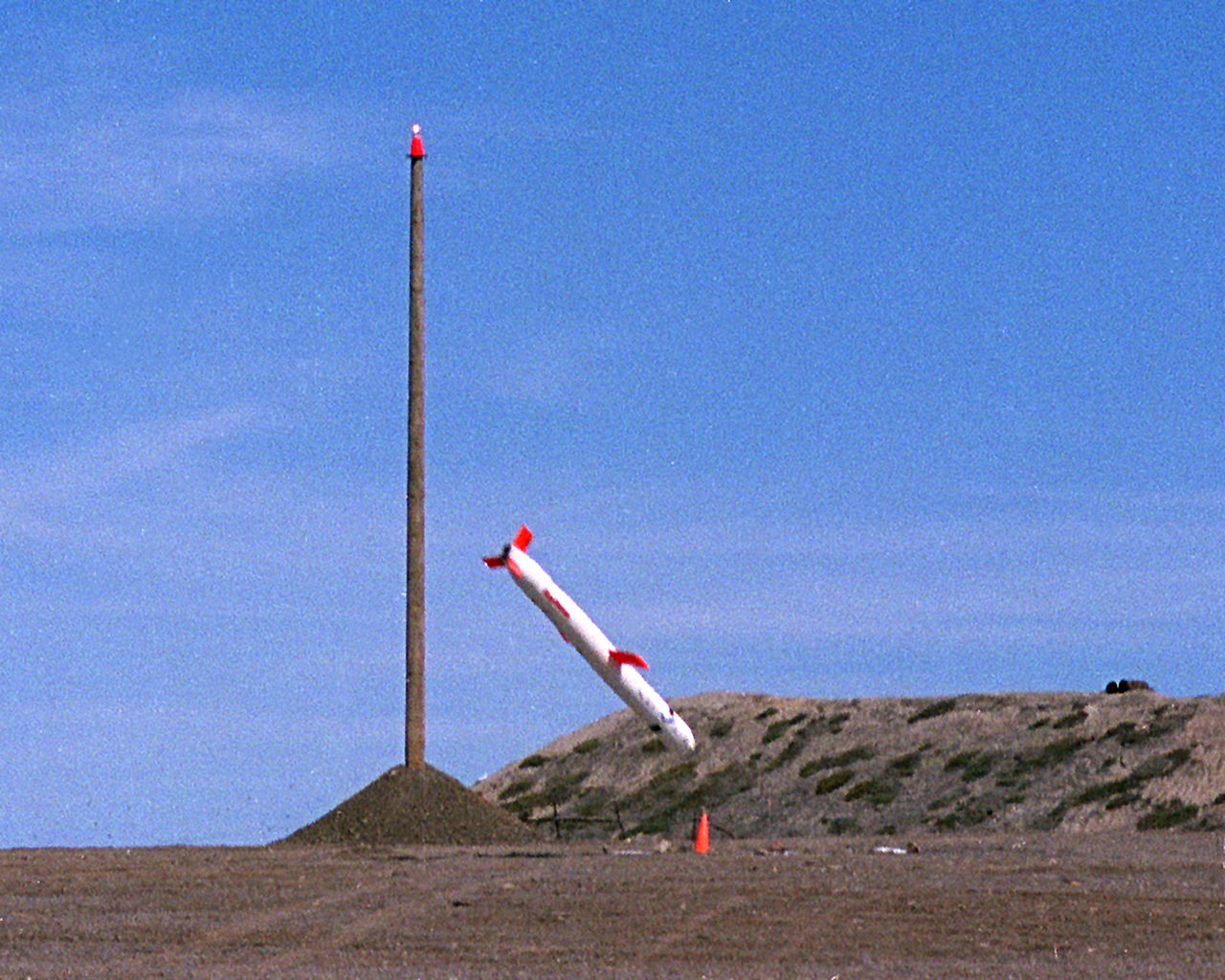
A TacTom dives into a target
Tomahawk's non-stealthy design makes it more vulnerable than the latest generation of cruise missiles, but there are no serious plans to replace it just yet. In fact, another major upgrade program is underway at Raytheon, who have had a sole-source contract for the program since 1997. This is the so-called recertification effort, which will replace life-limited components and upgrade the entire stock of Block IV missiles to Block V, with new navigation and communications electronics. Some missiles will be converted to the so-called "Maritime Strike Tomahawk" (MST), fitted with a terminal homing seeker of some sort in addition to their existing datalink and restoring the long-range anti-ship capability lost when TASM was retired. Others will receive the new Joint Multi-Effects Warhead System (JMEWS). JMEWS consists of a shaped charge that will punch a hole in the target, which a second warhead then flies through before detonating, dramatically increasing Tomahawk's capability against hardened targets.
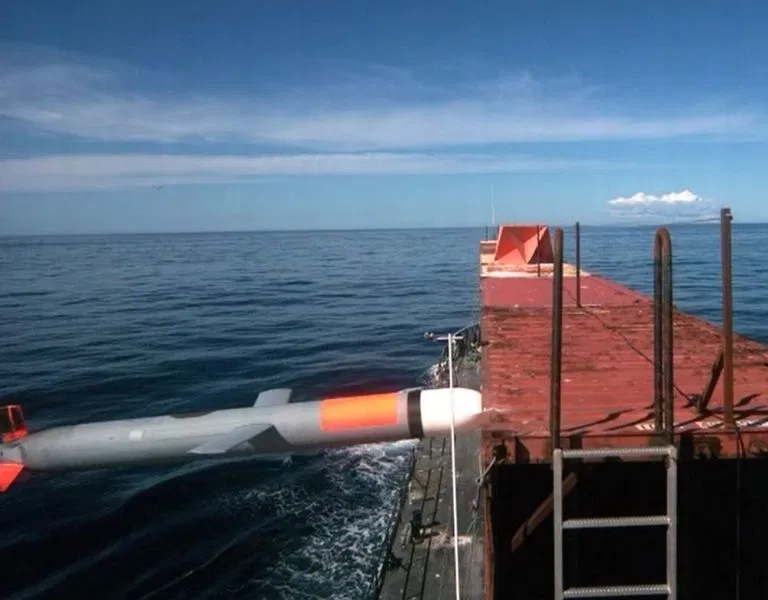
A 2015 Tomahawk test against a moving maritime target
Raytheon's facility in Tucson, Arizona continues to produce Tomahawks today. Besides rebuilding existing missiles, the Navy bought 90 missiles in FY20, and plans to buy another 90 in FY21, for about $1.9 million each. The current plan is to keep the existing inventory of around 4,000 Tomahawks in service for another 15 years, until the Next Generation Land Attack Weapon enters service. So far, very little has been publicly announced about NGLAW, and Tomahawk will almost certainly remain a vital part of the US Navy's arsenal into the 2040s.
1 GPS was also important for attacking coastal targets, as TERCOM required the missile to come ashore before it could work. ⇑
2 One aspect that bridged both was giving Tomahawk a time-on-target capability. Until Block III, there was not really a good way to figure out when the missile would hit the target, limiting the ability of planners to do things like saturate a target from multiple angles. ⇑
3 The rather dismal record of Russian hardware during the Ukraine conflict in 2022 makes this seem very unlikely in retrospect. ⇑

Comments
What is the window for time on target? Is it considered successful if everything is overhead in a span of a minute? Or 30 seconds? Or...?
I know for artillery they can sometimes get three shells to impact simultaneously, but for aviation/missiles I'm not sure what the standard is.
Unfortunately, I don't think any of my books have information about the relative sizes of the windows. I wouldn't be surprised if it's accurate to within a second or two, simply because that sort of accuracy is pretty easy to get with computers and GPS timekeeping. Before that, I think it was on the order of minutes.
@bean
It seems like the necessary figure would either be "how long it takes to reload the launcher" (for newer systems) or "how many targets can the system engage simultaneously" (for older systems), right?
It's more complex than that. First, there's the issue that people are only good at dealing with so many things at once, and you can degrade their performance by throwing too many things at them. Second, you may want to deconflict with other weapons and/or manned aircraft, in which case you're going to want quite tight time windows.
So to upgrade the Block IIs, the only things they changed were the engine, fuel tank, warhead, and guidance system?
At least they got to reuse the original US Navy decals. They could have cost a few hundred million to reapply.
So until the MST, none of our destroyers built since 2000 (when they stopped including Harpoon launchers) have had anti-ship missiles? That seems both utterly incredible and totally predictable somehow.
The traditional reason for a time on target barrage is to have the shells burst before anyone can get into cover, or maybe even lie down. If you're attacking infrastructure that won't apply in the same way, but since the missiles could be shot down, just like aircraft, having them all arrive over the target before the air defences work out what's going on is beneficial.
Really enjoyed this series, as well as other missile/bomb posts. Any idea why the RN tomahawk has four fins while the TacToms have three?
Maintaining weapons is hard. And yes, in various blocks and programs, they've basically lifted up the name and slid a new missile under it. Recert looks to be a bit of the same.
As for ASMs, the basic answer is that in 2000, we didn't see a surface threat, and there are serious targeting issues. These are probably solvable, but given the weapons available then, we weren't confident enough to stick missiles on our destroyers. The plan was to use Standard, which has always had a backup ASM capability. And MST still isn't in service.
No clue on TacTom's fins. Actually, I didn't even notice that. 3 vs 4 fins just seems to depend on the weapon, and it probably let them cut weight or something.
So this issue of the Harpoons was that the USN just didn't trust that a launched missile would actually go at the enemy, rather than the nearest Danish cargo ship?
And I imagine that the window size for a time on target barrage would depend very much on the exact target. Depending on the number of channels that the target has to track, and react to, missiles (and projected target's ability to actually use all their channels).
about $1.9 million each How does that compare to the cost of an F35 sortie?
Pretty much, yes. It's only in the last decade or so that we've gotten anti-ship missiles which are actually smart enough to tell the container ship apart from the warship passively. NSM and LRASM should both be in this category. But there was no reason for the US to start spending a bunch of money on it in the late 90s, because that wasn't our priority at the time.
It's a lot more expensive if things go right, although specific numbers are hard to find. But it's a lot less expensive if things go wrong. We usually use the two of them together for exactly that reason.